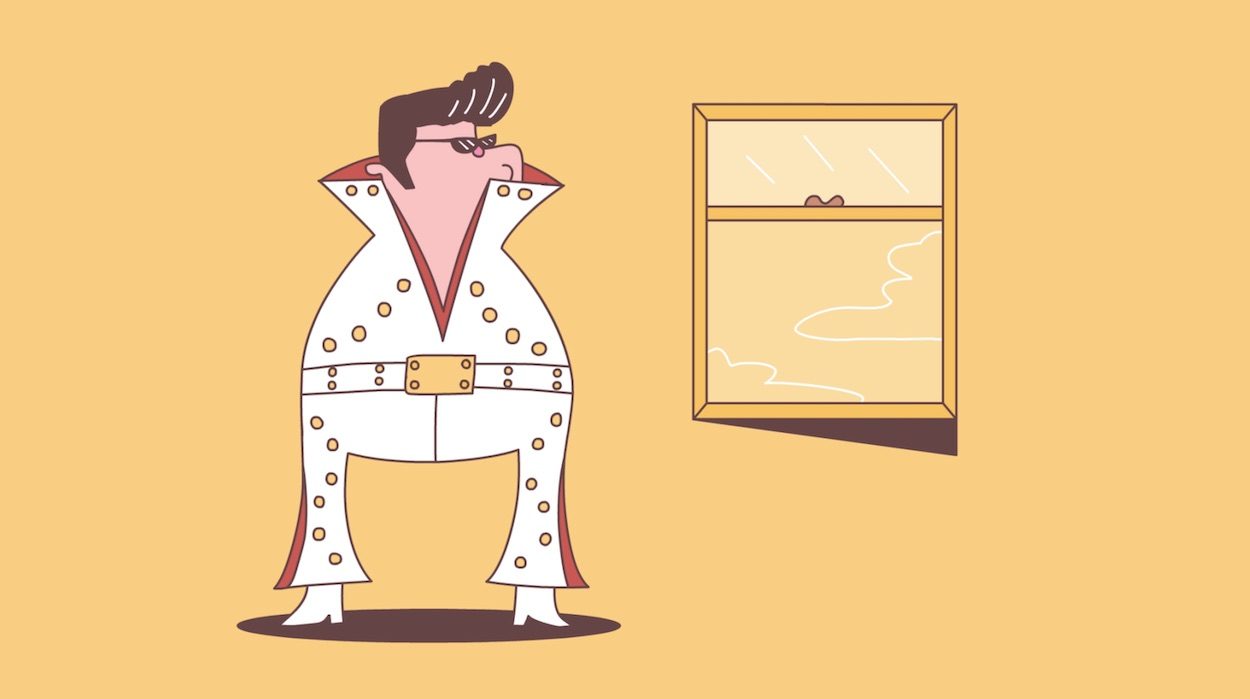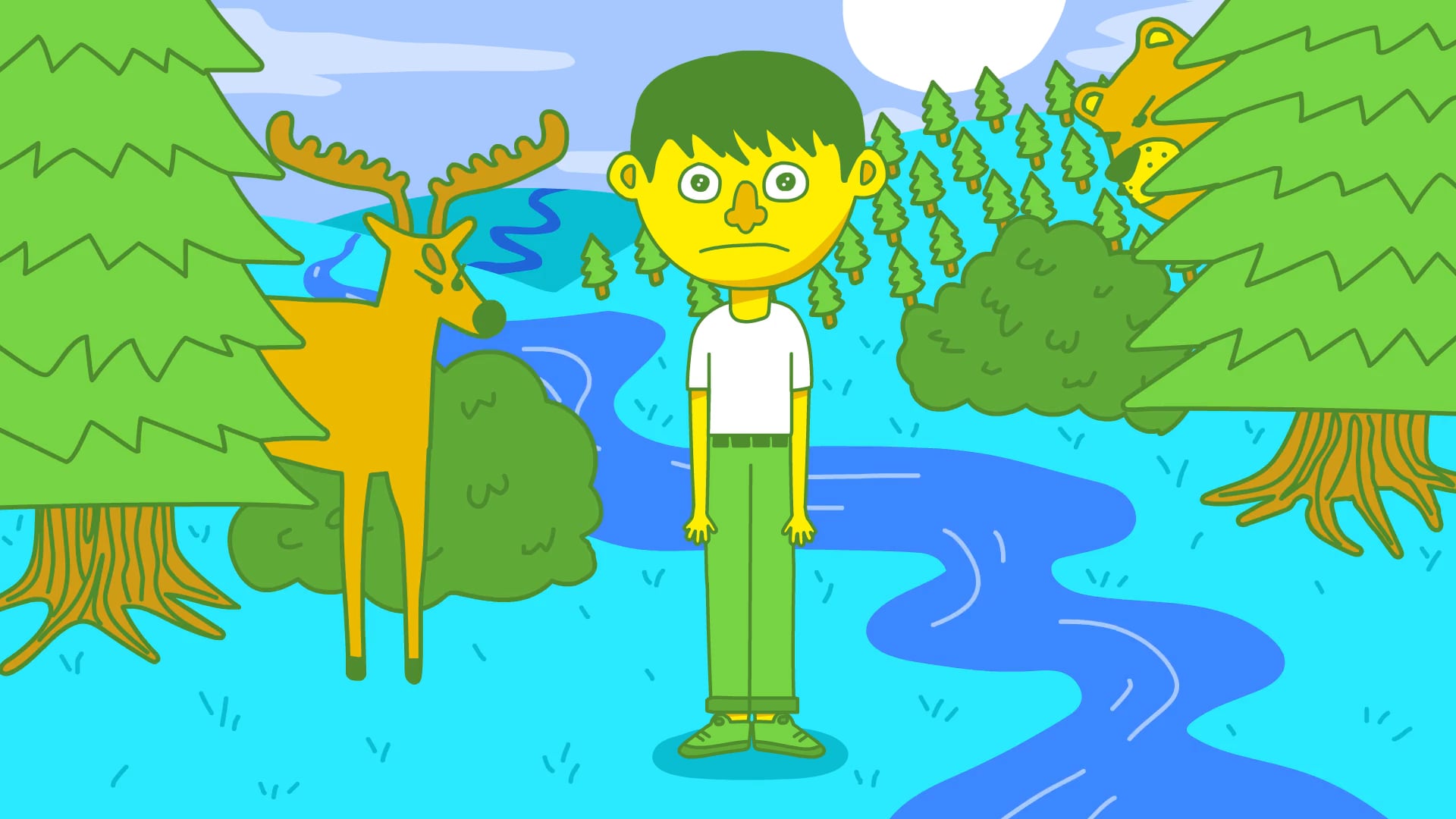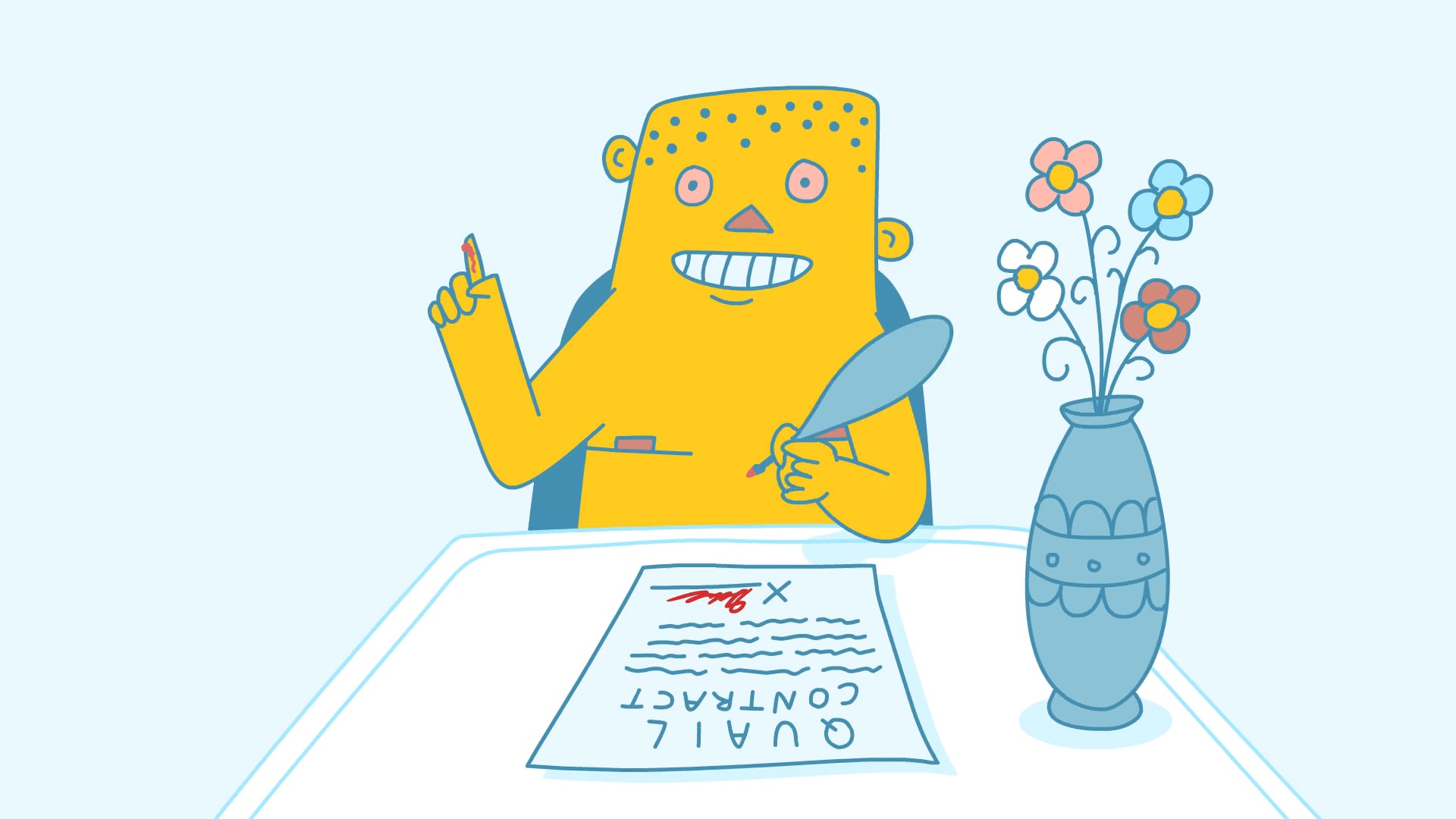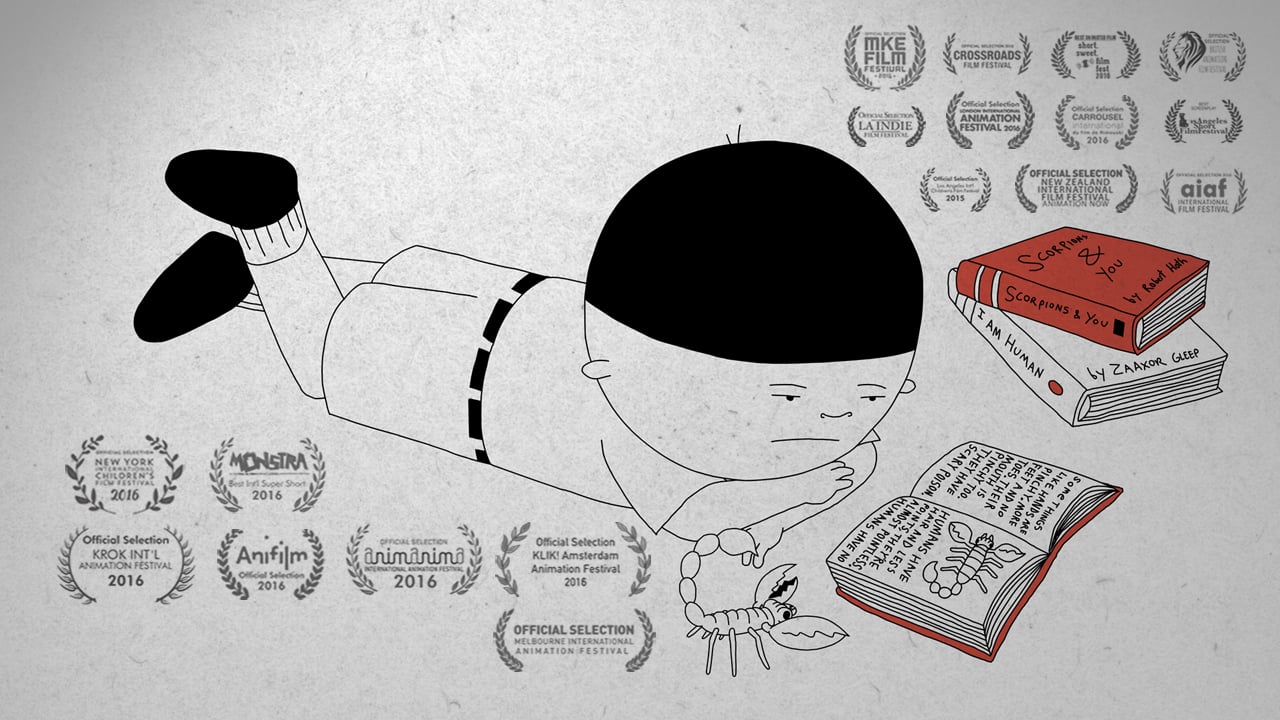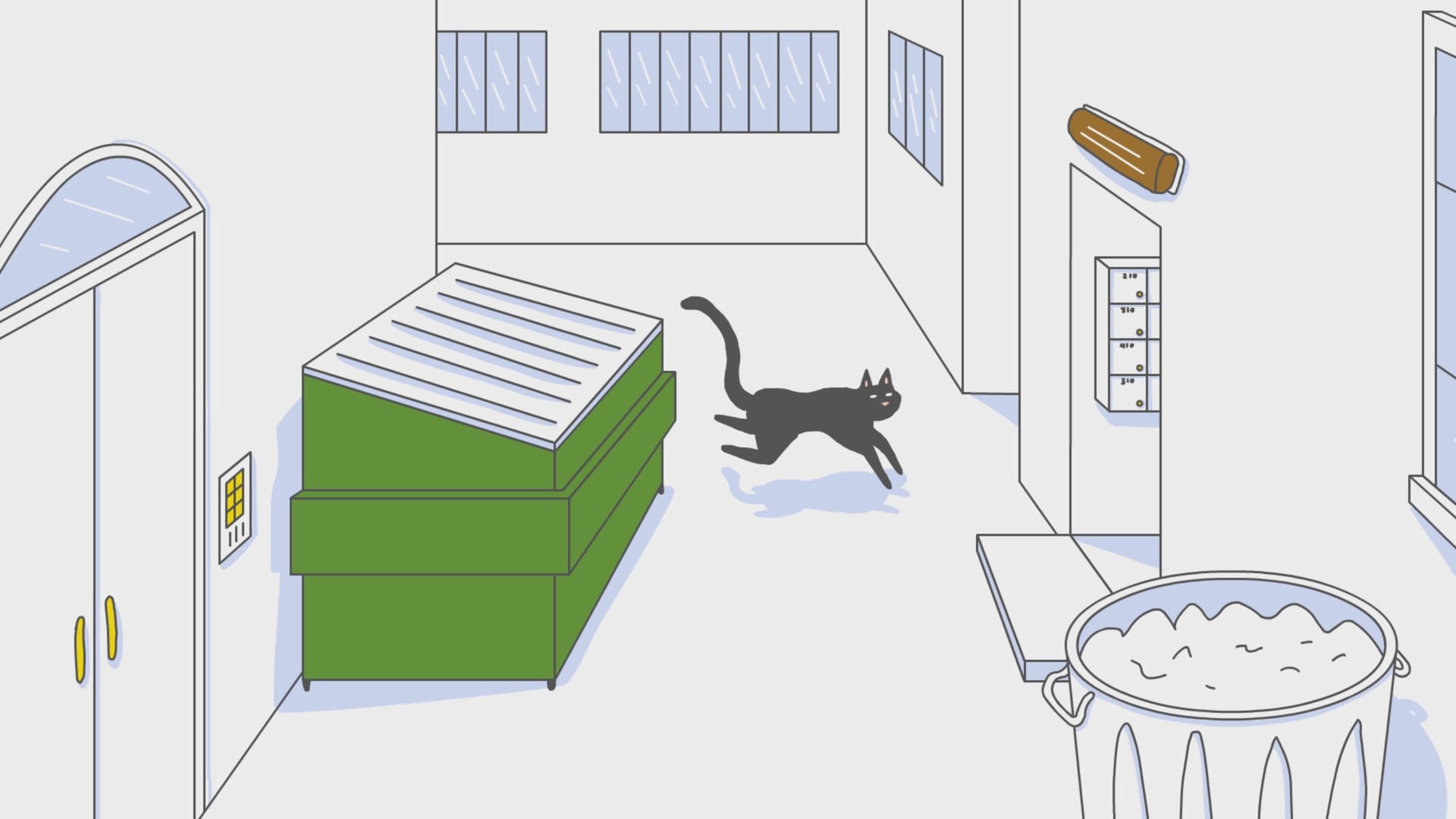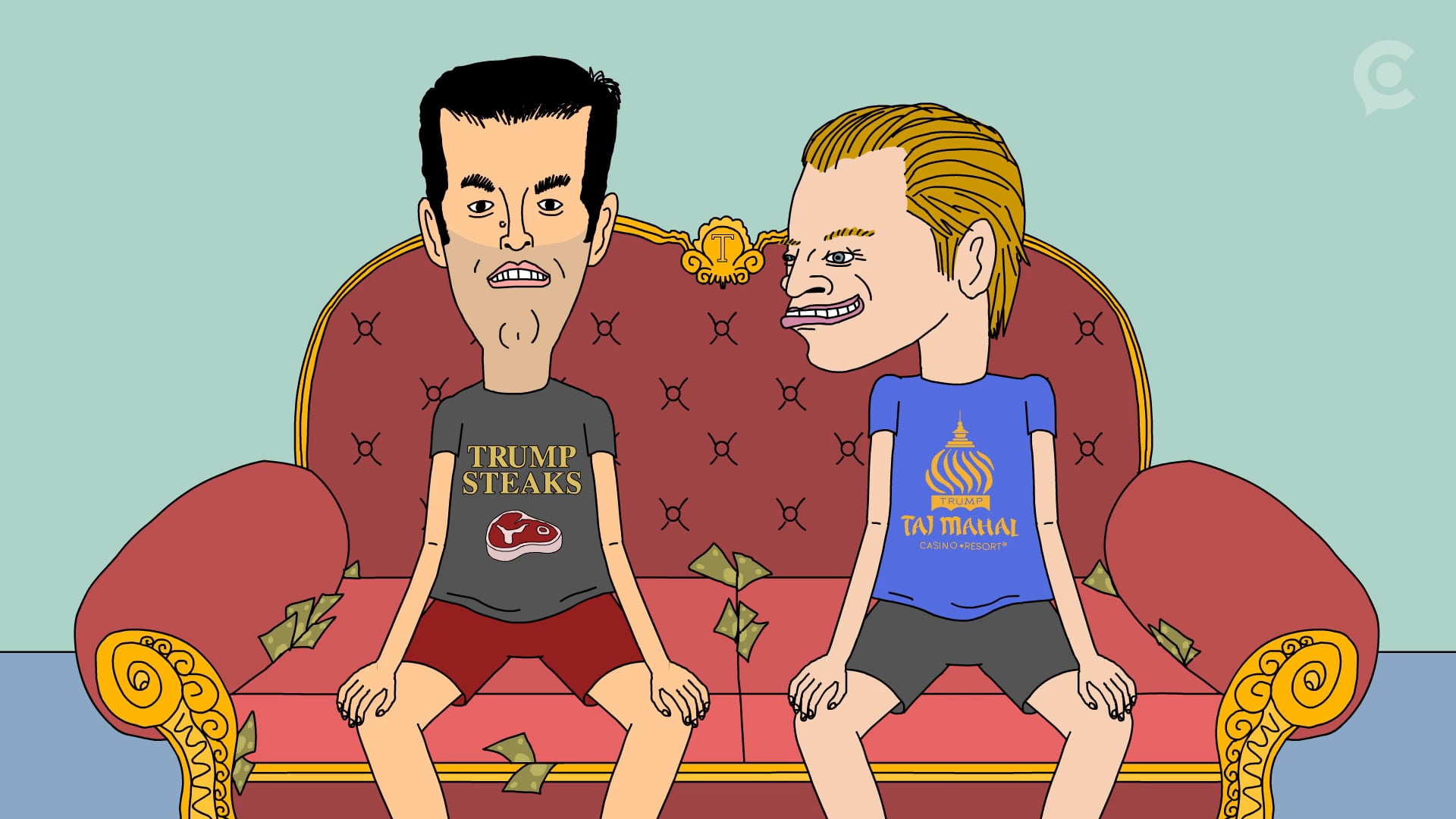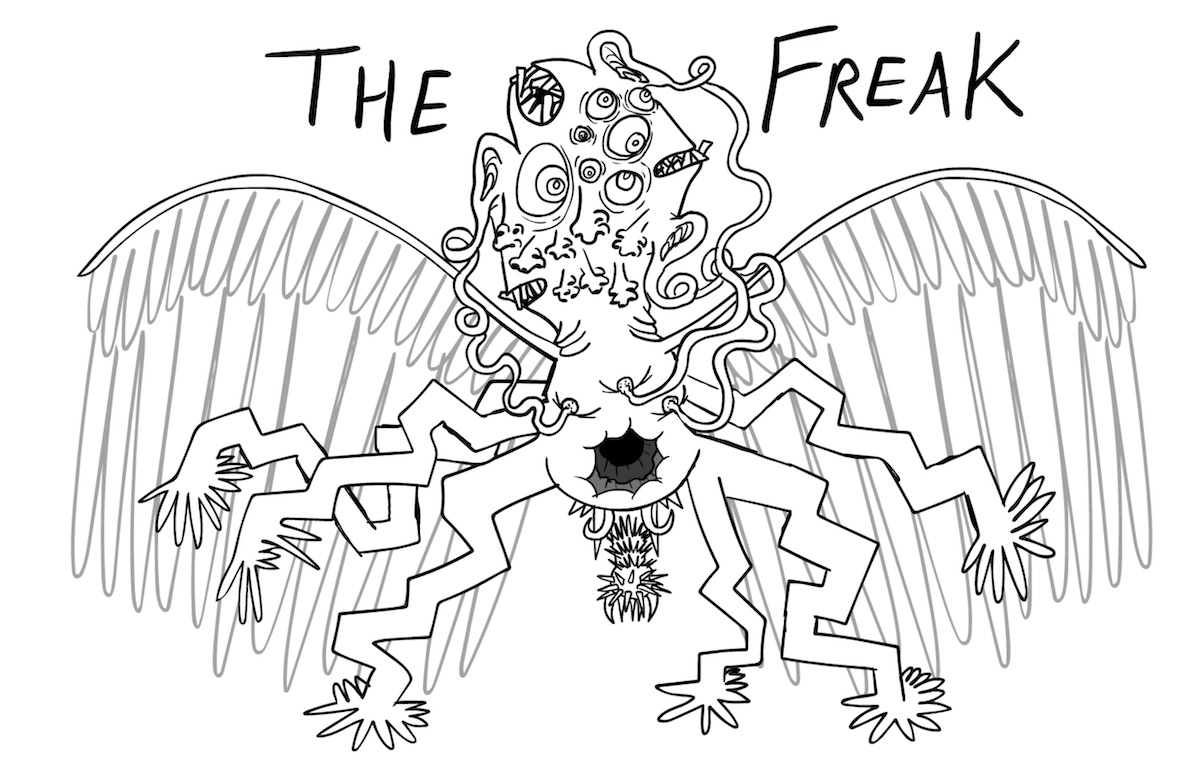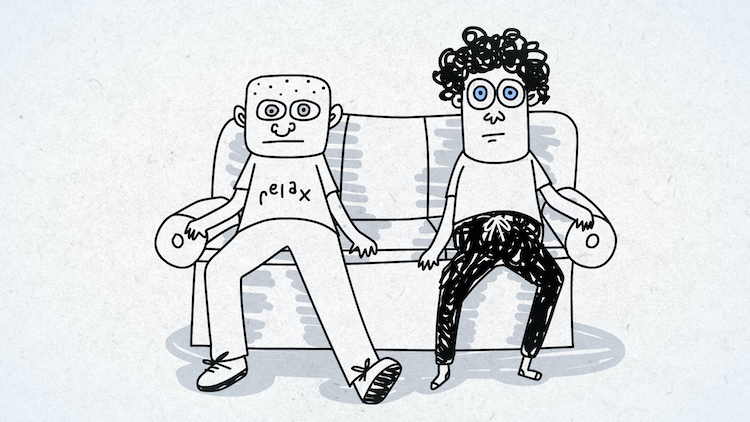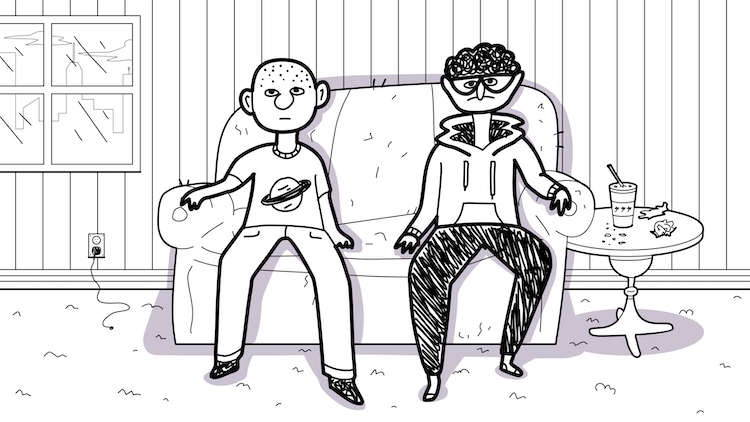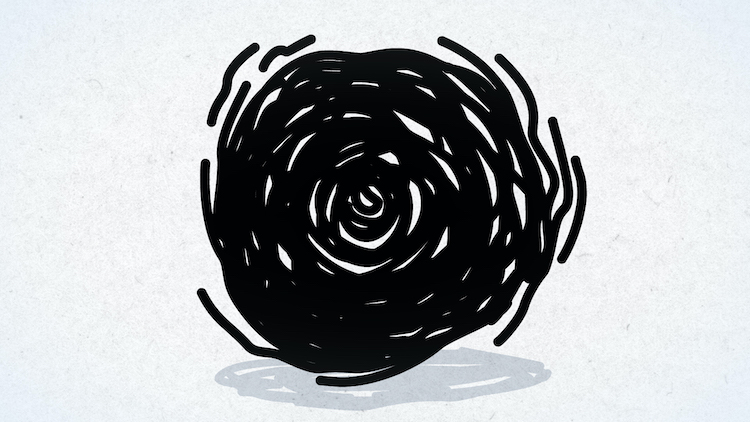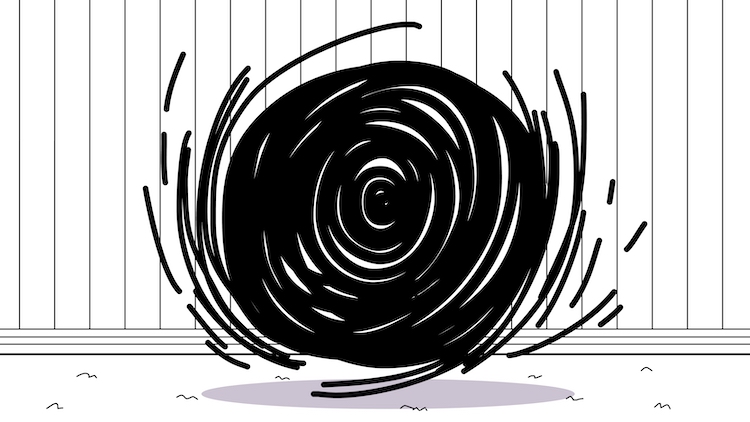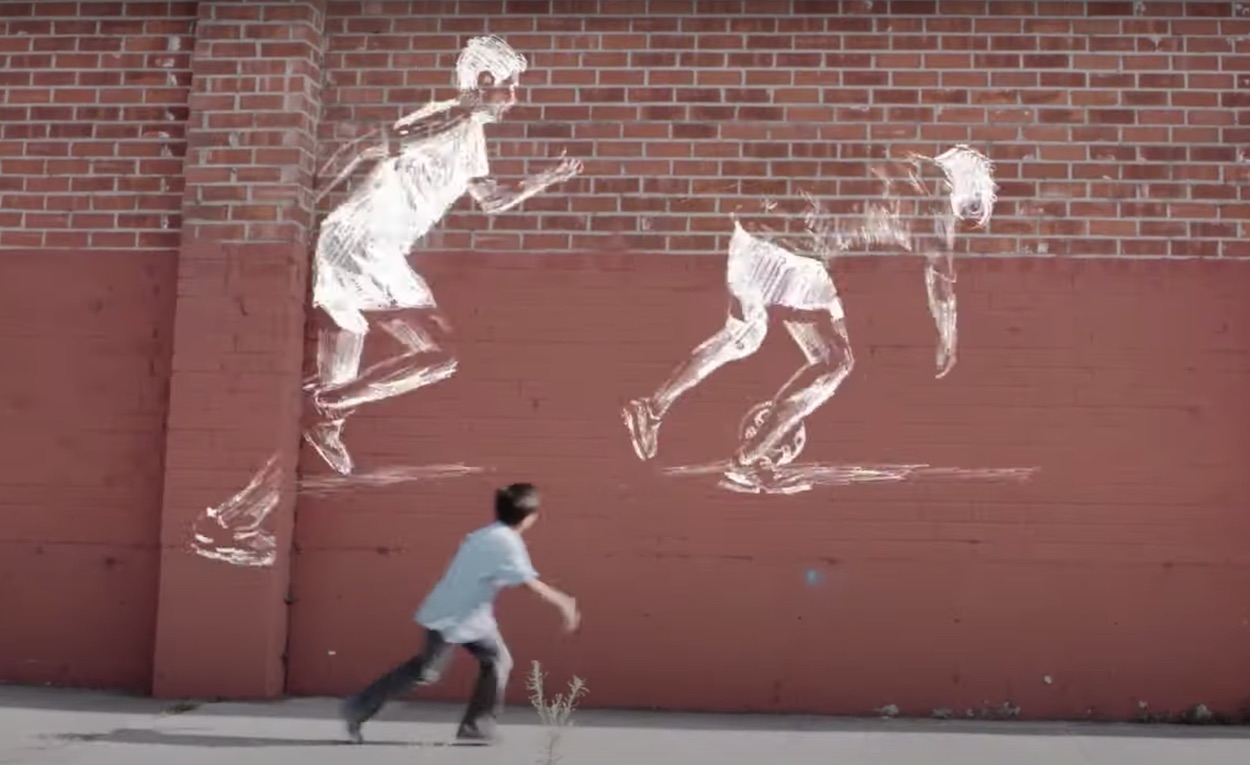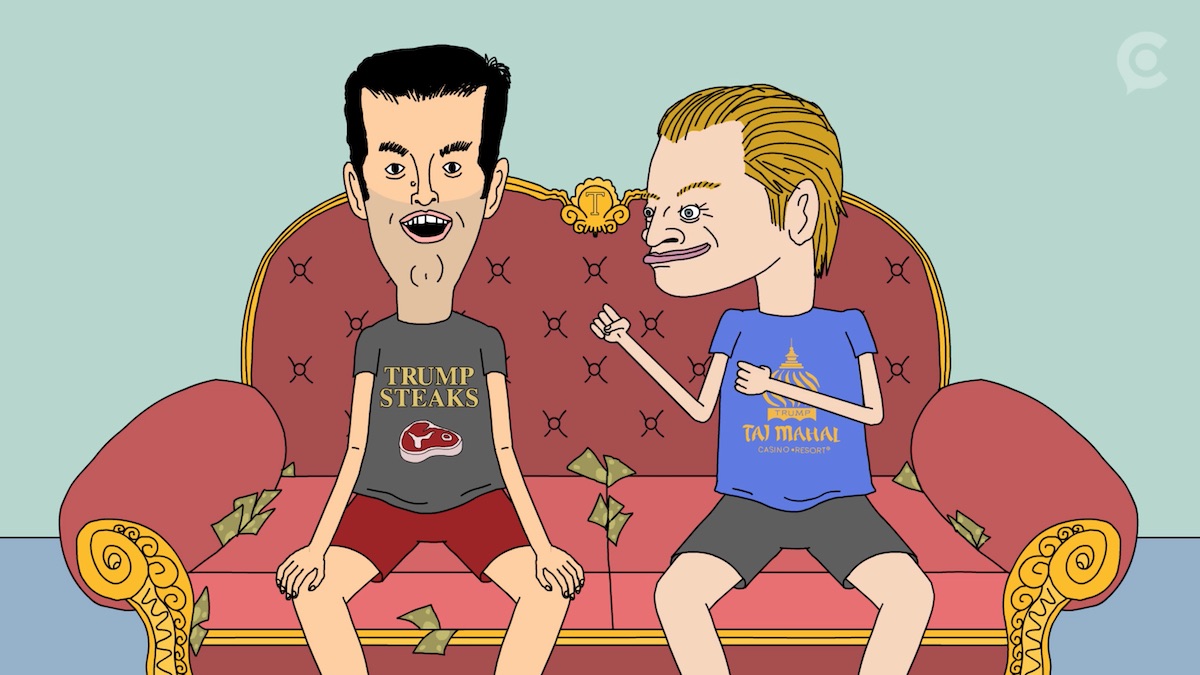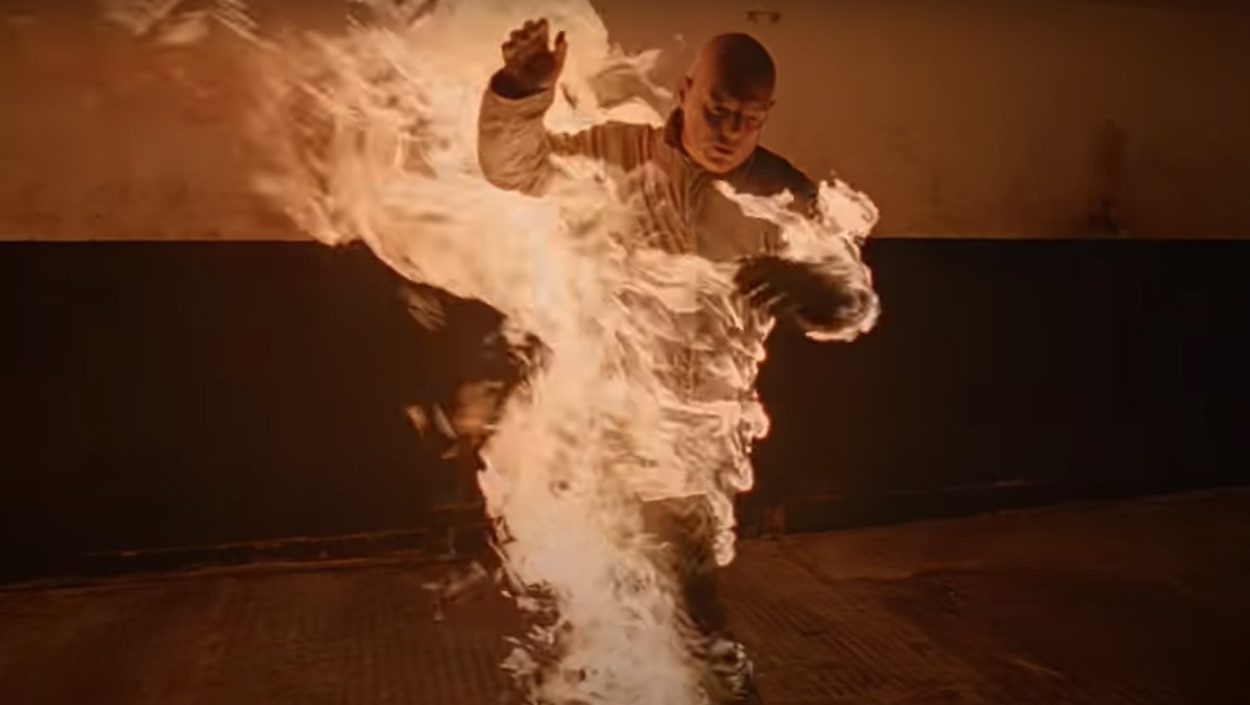Tell us a bit about your journey into animation – as a child, what were some of your favourite cartoons?
Growing up, I loved watching Looney Tunes and Seinfeld, I think these were my biggest influences. After that it was essentially anything and everything Cartoon Network and Nickelodeon had running. Some of my top cartoons were Dexter’s Laboratory, Rugrats, Rocko’s Modern Life, Ahh Real Monsters, Angry Beavers, Courage the Cowardly Dog, Hey Arnold! and Doug.
Of course, it was also the dawn of stick figure animation websites. Stick Figure Death Theater and Stick Death made me realize the tools I needed to start animating (Macromedia Flash at the time) which actually got me started into the process of making and posting my own stuff.
And when Adult Swim launched, I was a fan right away – even though I was probably a little too young to be watching. I was really into Space Ghost Coast to Coast, Home Movies, Aquateen Hungerforce, and Sealab 2021. I think these cartoons, plus seeing Bill Plympton’s “I Married a Strange Person” made me actually start thinking about going into animation as a career.
Alternate styleframe for Kill Your Idioms
‘Whimsical’ feels like the best word to sum up your short films; you delight in taking a straight approach to bizarre scenarios (Quail), flipping perspectives (The Freak) or mixing up the literal and the figurative (Kill Your Idioms). Where do you get your inspiration?
Usually my poem animations all start with the writing, but sometimes I’ll be sketching and a specific drawing or doodle will spark something. I love looking at the world very literally and expanding on the illogical in a logical way. I think absurdist concepts are the most appealing to me because life is already absurd, and it’s fun to point it out.
‘The Freak’ was inspired by the classic phrase ‘beauty is in the eye of the beholder.’ I thought how gross some human functions are and as I wrote it out, I realized the perspective must be from some other totally different creature. It took writing out the particulars of what this creature didn’t like to figure out what it actually would look like.
For ‘Quail’, I think identity and self-value is something I am always interested in exploring. There are so many self-help guides, gurus, books, pamphlets, and courses out there to get people to where they want to be, but they also seem like they’re built to over-promise and under-deliver. I thought it’d be funny to explore how unachievable a goal can sometimes be and naturally settled on becoming a quail. That, plus quails being offered at my butcher that week.
‘Kill Your Idioms’ was specifically a piece about my writing. I usually write the first line and expand naturally from there, but I view idioms as a collection of many different opening lines that could all be potentially expanded. It was done in an effort to force me to put what could be nineteen different poems into one poem and let them each exist as a single line. Basically a way for me to make fun of myself, even some of the visuals reference my other work.
Click on pic to see The Freak animatic
What does your creative process typically look like?
For my poem animations, typically it starts with the writing – usually the first line and then it’s me expanding on it naturally. Once I sit down and start typing, I try to move fast enough to not second guess and let the piece write itself [in a stream of consciousness].
After I have a piece written, it will usually sit in a folder on my computer with hundreds of other docs full of poems like these, as it’s more of an exercise that I try to do regularly. When I have a break between jobs or am feeling inspired I read through them and if any stand out to me I’ll start sketching ideas for the piece in my sketchbook. If it’s coming together as an actual film once I’m drawing it out, I’ll record and edit the voiceover.
After the drawings and boards are all figured out, I go into the computer and redraw everything digitally in Adobe Animate building the animatic and syncing to my voiceover track. While building out the animatic I start mocking up different design approaches, colour palettes, etc. and establish rules of how to handle the art style. After I have the style worked out, I go back into the animatic and break it up scene by scene and make a production schedule so I know what to work on when.
From that point on, I refer to my schedule and work on whatever scenes I’ve set aside each day, until my film is finished.
Cake FX, Blackhole Apartment final style
Cake FX, Blackhole Apartment original style
We loved your recent FX Network video, Black Hole Apartment, on the pros and cons of living with a black hole in your flat (effortless rubbish disposal is most definitely a plus). Tell us a bit about the brief and how you brought the idea to life.
After watching my poem animations, ‘By the Name of Boston’ and ‘No Back Dan’, FX asked if I had more poems I could animate for them. They selected three to go into production – two went to final animation and one aired last season. FX were great to work with and very hands off. It felt like getting to do a personal project only with them backing me and getting excellent talent to work with.
It was a cool change of pace having to voice direct Johnny Pemberton for ‘Blackhole Apartment’ – it was the first time anyone besides me read these poems aloud, and I think he brought a lightness to it that made the piece stronger. In fact, I completely redesigned the character after Johnny’s reading, since I originally drew someone more based off of me and I wanted to better capture his voice.
I did all the animation production for both films: one of the key creative directions I thought of was the idea of the ‘scribble blackhole fill’ being applied and connected to other elements, like object fills or the main character’s hair.
Cake FX, Blackhole final style
Cake FX, Blackhole original style
Although you also specialise in mixed-media live action and motion graphics work, it feels as though 2D animation is what you’re most drawn to. There’s been a resurgence of interest in 2D in recent years; what’s its specific appeal for you?
I have always loved 2D animation, it’s why I started animating in the first place. Nothing beats the feeling of seeing something you’ve drawn move around and come to life. It’s why I have always preferred 2D to 3D as well.
My favourite thing is the variety: you can take any style or aesthetic and make it move. The appeal to me is also in its ability to be unrealistic and to have its own rules. Though there is something incredibly impressive about ‘Disney level’ animation, it gets to a point: when something is so painstakingly captured to mimic reality, then why not just film it instead?
I think you have to be crazy to do 2D because it’s so much work. My advice is always to not be precious with your drawing and remember how the human eye works. It can only process information so quickly. I remember in art school, no one could finish an animation because they would take so long drawing a few frames beautifully and leave the rest as all sketches.
I’m happy for the resurgence – but technically, I owe my career to 2D. While everyone else gave up on it, I continued to keep doing it.
Click on pic to see BTS of Whoever We Are, an interaction between live action and animation
Animation is a brilliant tool for making ‘difficult’ subject matter engaging – whether that’s because it’s politically sensitive, abstract or simply dry. When it comes to client briefs, what’s been the toughest to crack from a creative point of view?
The toughest for me was probably Pepsi’s ‘Beats of the Beautiful Game’ with my brother, Ross Kolton. We needed to figure out so many different aspects and steps of the project simultaneously. In addition to writing the idea together and planning the shoot, we had to solve how the post process would line up with everything and achieve the animation technique we wanted.
In the end we used rotoscope tracing frame by frame footage we shot of soccer players, that was then motion-tracked to footage of surfaces in order to give the effect of chalk drawings coming to life.
It started with editing the soccer footage down to just keyframe poses, exporting those, and then setting them up on a computer monitor that we taped a pegbar to and used as a combination projector/lightbox for the artist to trace. Once everything came together in post we were excited to see the concept and all the elements working harmoniously.
Don Jr and Eric Trump in Russia Love
You’ve animated a lot of famous folk, from Jamie Foxx to Ed Sheeran, Trump and Hilary Clinton: who have you most enjoyed animating, and who’s been the most challenging?
I had a fun time animating Don Jr. and Eric Trump as Beavis and Butthead. Part of my process was watching episodes of Beavis and Butthead so I could best emulate their specific style of motion in my parody. Also learning how to do their voices was an added bonus.
The most challenging was probably Trump, because I had to listen to so much audio of him talking. It was also hard because he is already so awful that there isn’t much more you can do to him, to make him look more ridiculous than he already is. This is probably why I usually opted to draw him shirtless, with the most disgusting nipples imaginable.
Film production in general has been hit hard, but animation was one of the few areas which seemed immune to the pandemic. Has this been a good time for you, creatively speaking? And what learnings will you take with you in 2021?
I think this year has been creatively good for me. I’m very fortunate that my freelance work allows me the freedom and flexibility to always pursue personal creative projects, and I’ve been trying to stay productive during the pandemic, especially at the beginning when work was slower and the industry was resetting.
I think the best lesson I’ve learned is all it takes to make a film is to sit down and make it. I would have many more films if it wasn’t for all the time I spend wondering if this is the right film to be spending my time on. Instead of that wasted effort, I try to start things now and if I lose inspiration halfway through, at least I tried it and can move on as opposed to sitting and wondering what I should make next.
Interview by Selena Schleh
https://grantkolton.com/
https://vimeo.com/grantkolton
https://www.instagram.com/grantkoltoons/?hl=en
